Tiny House Tiny Footprint
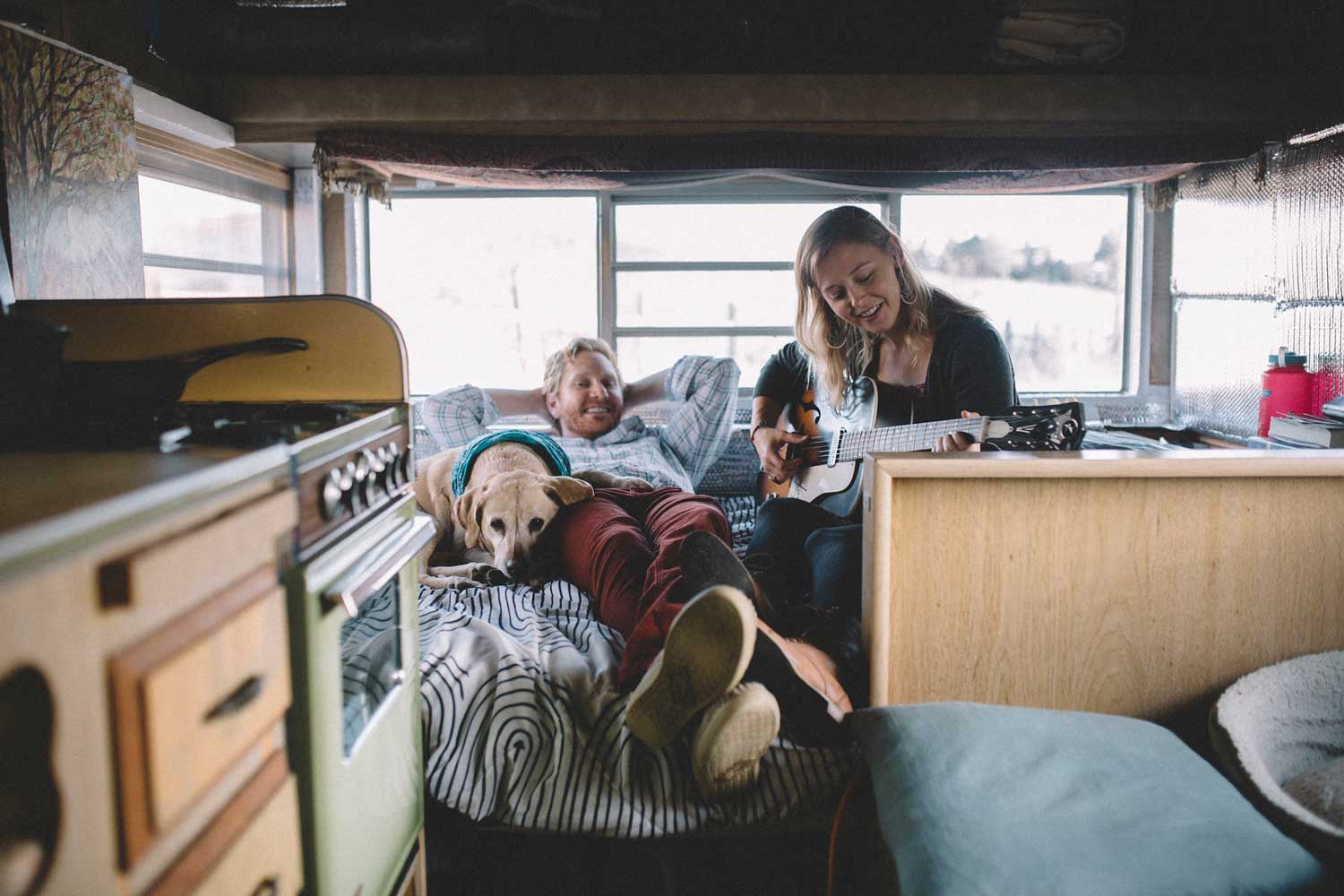
Roll With Me In A 140-Square-Feet Camper Trailer
Why a Colorado couple in their 20’s traded a city apartment for a tiny, mobile home.
Text by Kathleen Morton
Photos by BAMphoto and Tiny House Tiny Footprint
Most tiny dwellers have the itch to travel and live small in their blood. When these particular people were little, their families took them on road trips where they would sleep in cars or tents along the way.
Living in a suburb outside of Chicago, I had a different upbringing. My family didn’t enjoy camping and so, we stayed in hotels or family friends’ houses when we traveled. I didn’t learn from a young age how to start a fire, set up a tent or pack small. I thought only the most daring people were the ones that headed into the mountains for a few days, fitting all that they needed on their backs.
The first real backpacking and camping memories began when I moved to Colorado four years ago.

Photo by Tiny House, Tiny Footprint
Most people who relocate to the 300-days-of-sunshine-state feel the need to be outside as much as possible, and I am right there with them. Here we have a collection of like-minded folks who spend their weekends skiing, biking, hiking, climbing and camping. When it rains, we all look at each other and ask, ‘what do we do now?’
So it is no surprise that I also feel a strong connection with nature, but I am doing something that is a little unusual around here. I am living out of a 140-square-feet camper trailer with my boyfriend, Greg, and our dog, Blaize.
But it wasn’t always like that.
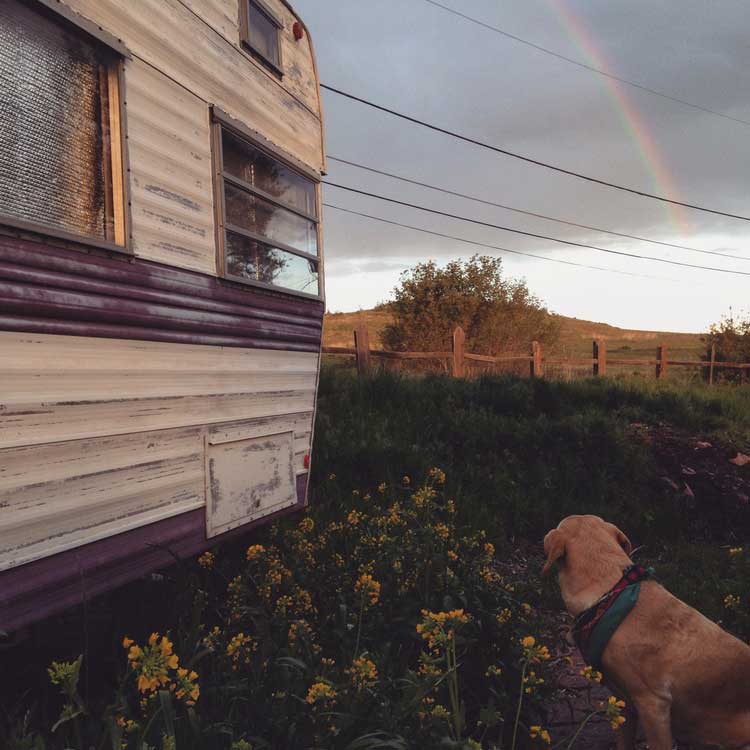
Photo by Tiny House, Tiny Footprint
When Greg and I met a year and a half ago, I had every intention of living with him in the city. It was in those first few months of dating that Greg, Blaize and I were living in a 1,000-square-foot apartment with our roommate, Stacey. The four of us often felt crowded in that space. But when you’re in your 20s living in a city apartment, you find ways to make space work if it means you can save some extra money on rent.
When Greg and I would head into the wilderness together, he would teach me which plants and berries were edible. Reluctant at first that I was walking into a trap, I would wait for him to taste them before I would follow. As I began to trust myself and embark on my own solo trips, the little city bubble I was living in started to burst.
When our lease was ending in the fall, Greg and I started to ask ourselves where we should live next. It seemed like our friends and family expected us to find our own apartment so we had a little more space. And we thought this would be our next step as well. We started touring apartments around the city, but nothing felt right.
Was it possible to find a place where we could escape to the city for the day, but know that our home was the place where we could fall asleep tucked in within the foothills and wake up to the sounds of wildlife in the morning?
A few years back, Greg and his friend lived in a van in New Zealand for four months. He was used to the tiny lifestyle and thought we could expand our backyard space by decreasing our square footage.
And as for me, I remember when I was young escaping to my room to unleash my creativity through writing and illustrating my own children’s books. It seemed like I could easily adapt to a smaller space, even if it meant I had to share it with someone else.
We purchased a 1969 camper trailer from Craigslist and found land from a family on Airbnb, but moving in wasn’t a piece of cake like we both thought it would be.
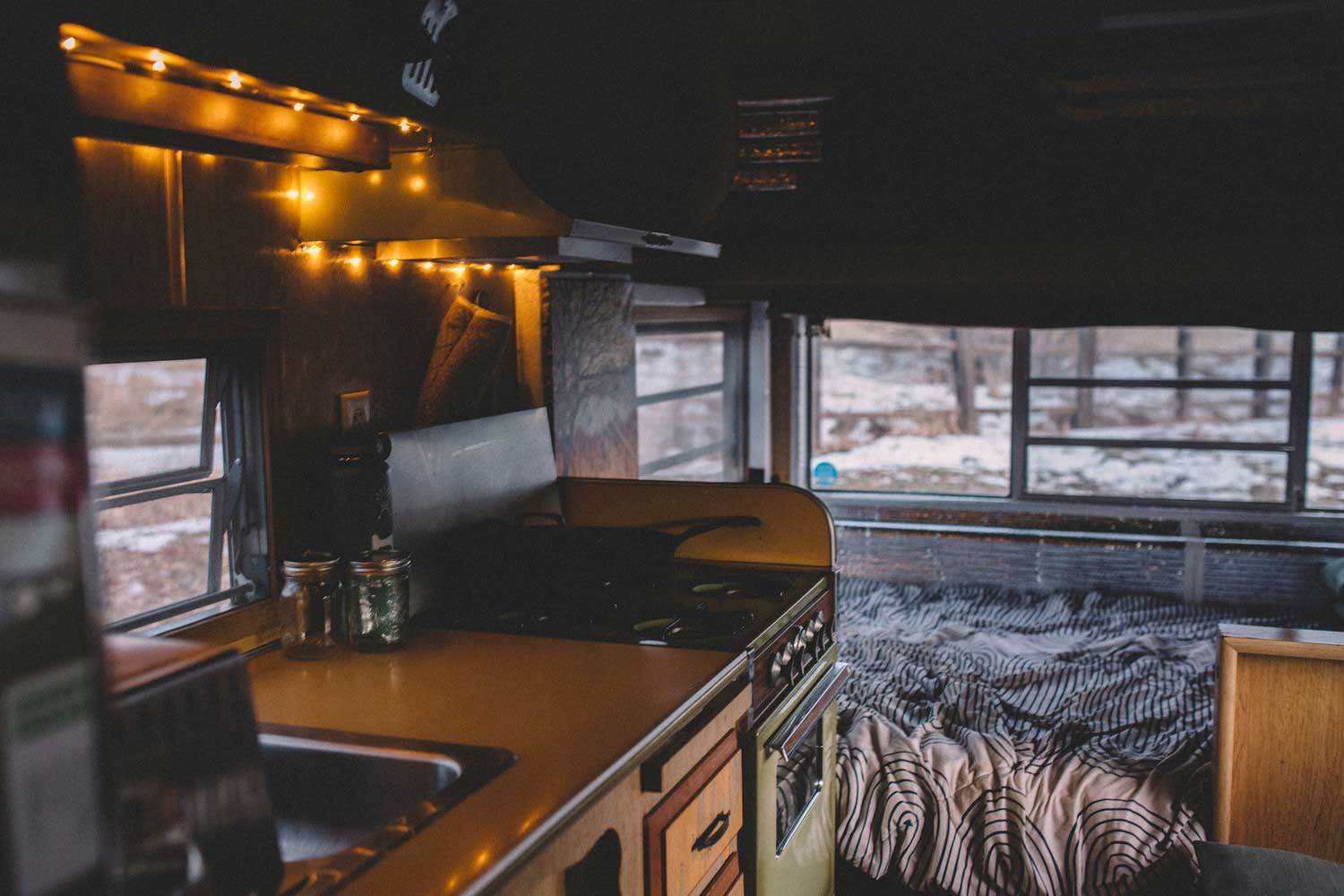
Photo by BAMphoto
First, we had to downsize our possessions. We could only bring what would fit in a small space so we were forced to give away the rest of our items. I was attached to quite a few things that I had owned for long periods of time. I had to have deep conversations with myself about the value of these items, figuring out what could stay and what would ultimately have to go.
This was in October, and that meant winter was right around the corner. Oftentimes I would come home from work to find Greg creating insulation blocks covered in radiant barrier, adding them like puzzle pieces to our windows.
Unfortunately, we can’t pretend that the first couple months weren’t difficult for us. We had to get used to being in a small space together. There is nowhere to escape to, so you learn quite quickly to embrace the space you have together. If one of us is angry, it fills the space and becomes a toxic place to live in. Therefore, Greg and I had to learn early on to communicate with each other.
Living on someone else’s land brings both positives and negatives, but most of the advantages go hand-in-hand with reducing our environmental footprint.

Photo by BAMphoto
As far as location, we really lucked out. We are close to open space, so we have access to hiking and biking trails. We can watch the sun rise and set, and get to listen to a soundtrack of rain or hail when the weather turns. But because of this, we have to take extra good care of our home.
A few months ago, I accidentally stepped on the skylight and cracked it. We waited a few days to replace it, until one morning Greg woke up to a stream of water on his head. Like a lightning bolt, he jumped out of bed, asking me to grab something to catch the leak. It was in that moment that I wasn’t sure whether to laugh or scream.
Little did we know that tiny living often has moments like these.
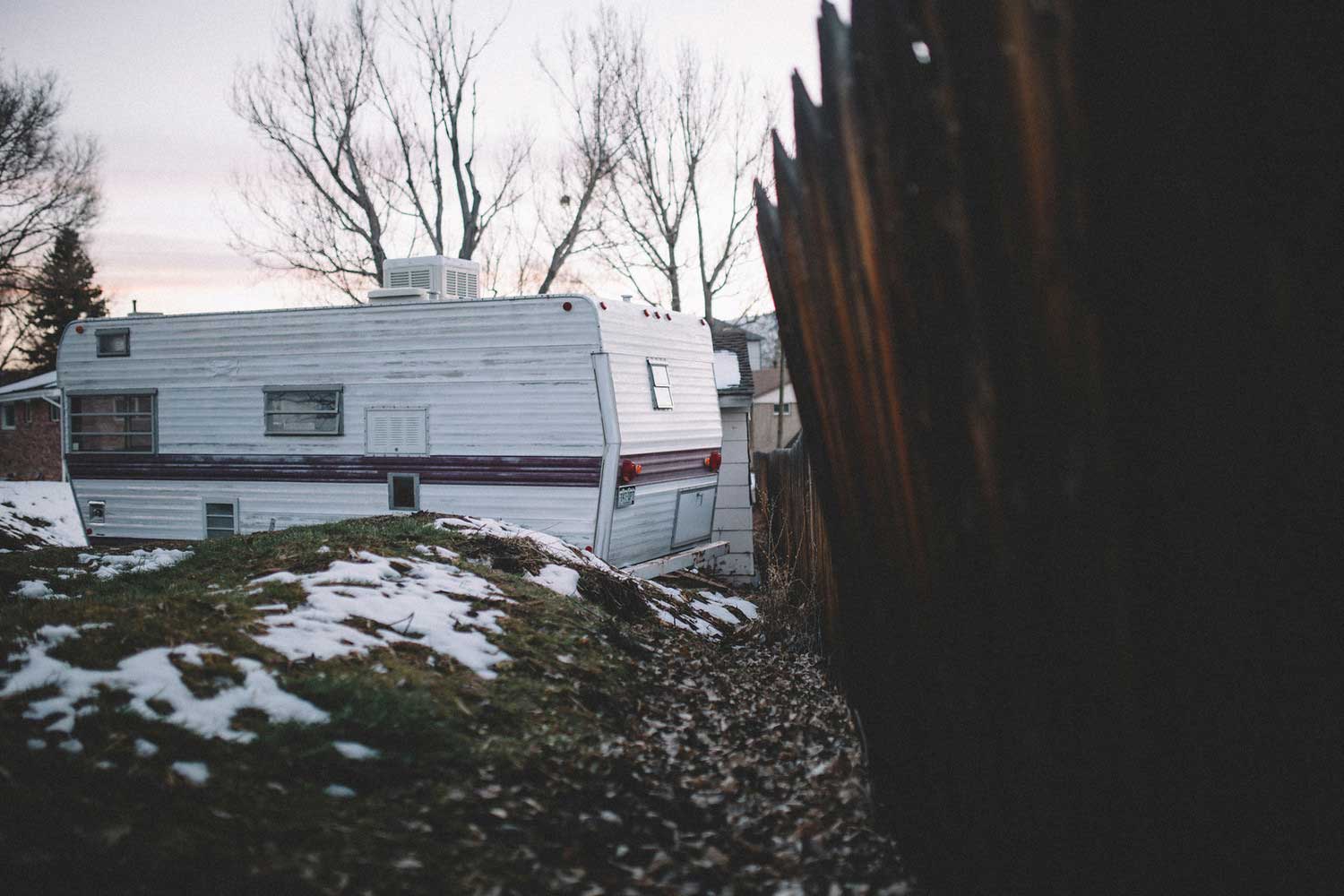
Photo by BAMphoto
In order to use our landlord’s electricity and WiFi, we had to run a 200-feet power and ethernet cord from their house to the camper. When their electricity goes out, so does ours, as we experienced one night in the dead of winter. In an apartment, I would curse to the power gods, because this meant no heat to get through the night. But in the camper, it’s a different story. We are used to living a little off-the-grid and have propane heat to keep us warm.
We aren’t connected to our landlord’s water supply, so instead we refill gallon water jugs, using them for washing dishes and drinking water. We are more conscious of our water use than we ever were before, forcing us to conserve and only use what we need. We use a composting toilet to avoid a greywater and blackwater system, allowing us to recycle nutrients directly back to the plants they came from.
Every day before work, I pack a bag filled with work clothes and head to the gym to shower. This started as an exhausting process, because I’m not the type of person who plans outfits the night before or knows what I want to wear when I wake up. But this is where downsizing has it’s benefits. If you own less clothes, you will have less options.
Greg and my favorite conversations are about the next trip we’re going to go on. Everything we need is in the camper, and because we don’t have much stuff, we are not tied to our home. We can easily pack up our car and hit the road.

Photo by BAMphoto
Our lifestyle and thoughts on the future have shifted. No longer do we feel the pressure to buy a large house or even build a tiny house. If we can make 140 sq. ft. work, we can make any small space livable. We hope to inspire others to downsize, make more environmentally conscious decisions or decrease their square footage as well.
Our definition of a ‘home’ has changed over time. We know we can easily live anywhere as long as the three of us are together. When we can save up enough money, we will buy a smaller vehicle (like a van or truck). Then you’ll find us living out of a new tiny house on the road.
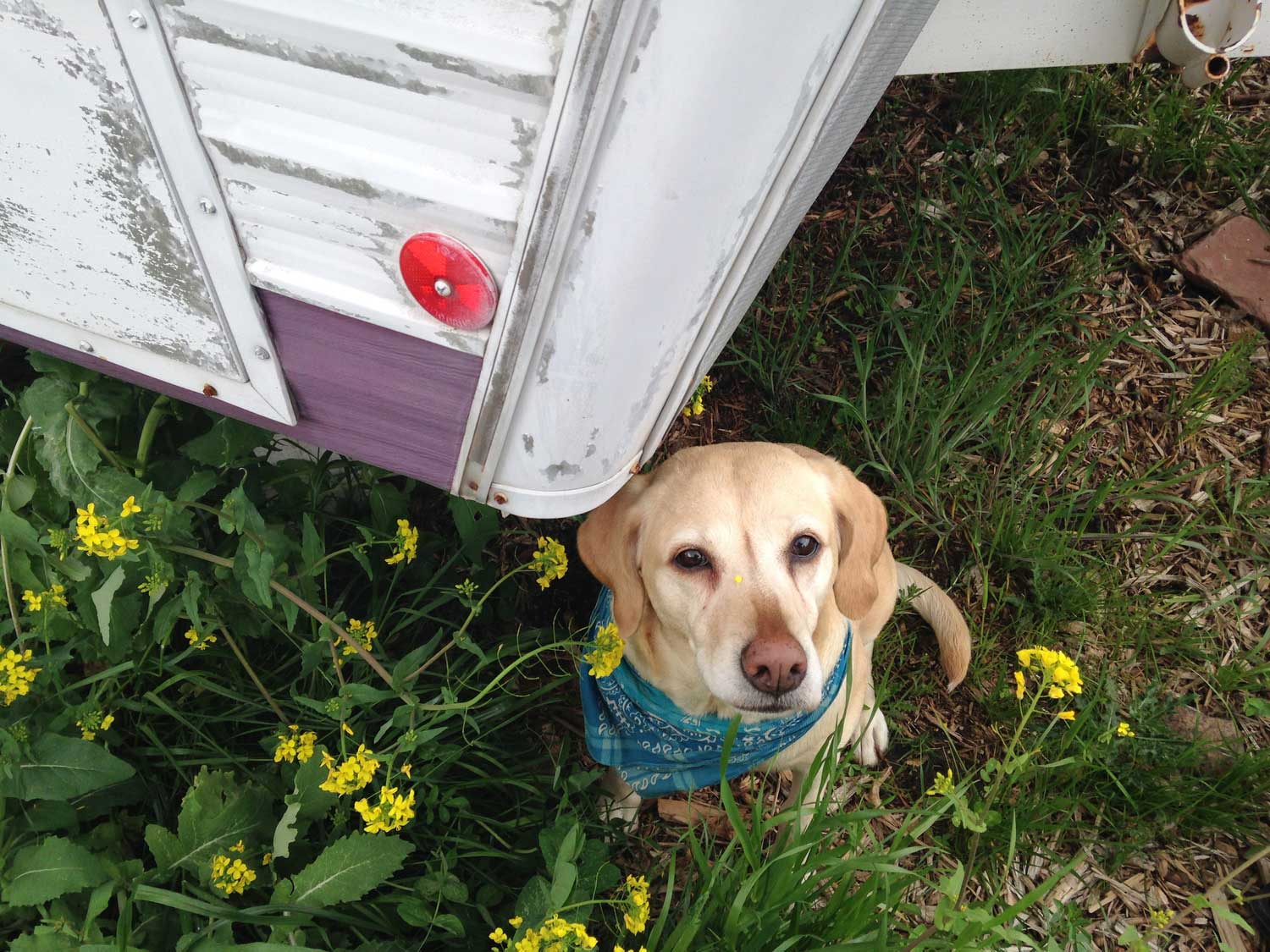
Photo by Tiny House, Tiny Footprint
Kathleen Morton lives in Colorado with her boyfriend, Greg, and their loving dog, Blaize. They are living small out of a 1969 Terry camper trailer. When they are not spending time in their 140-square-foot home, you can find them hiking, biking, climbing or exploring the great west. Since Kathleen and Greg both have full-time jobs, they escape for micro road trips on the weekends. They’ll be leaving on a two week adventure in late July.
You can follow their journey at tinyhousetinyfootprint.com or connect with them on social media: Facebook, Twitter or Instagram.
Be the first to comment